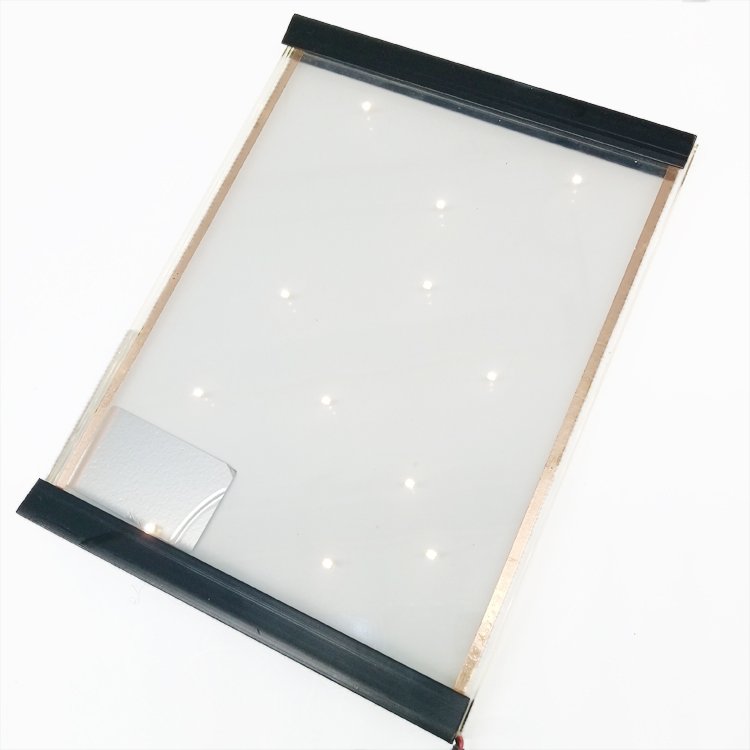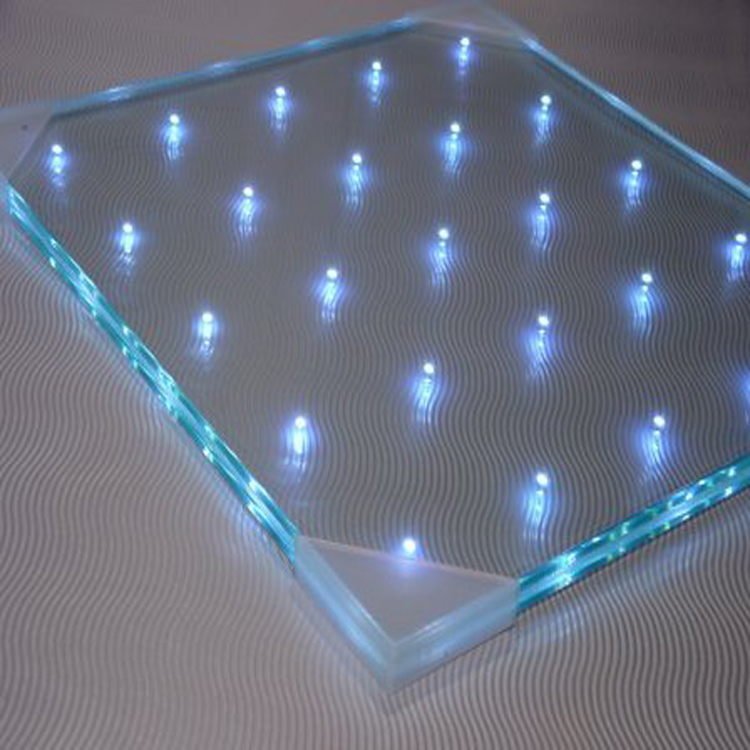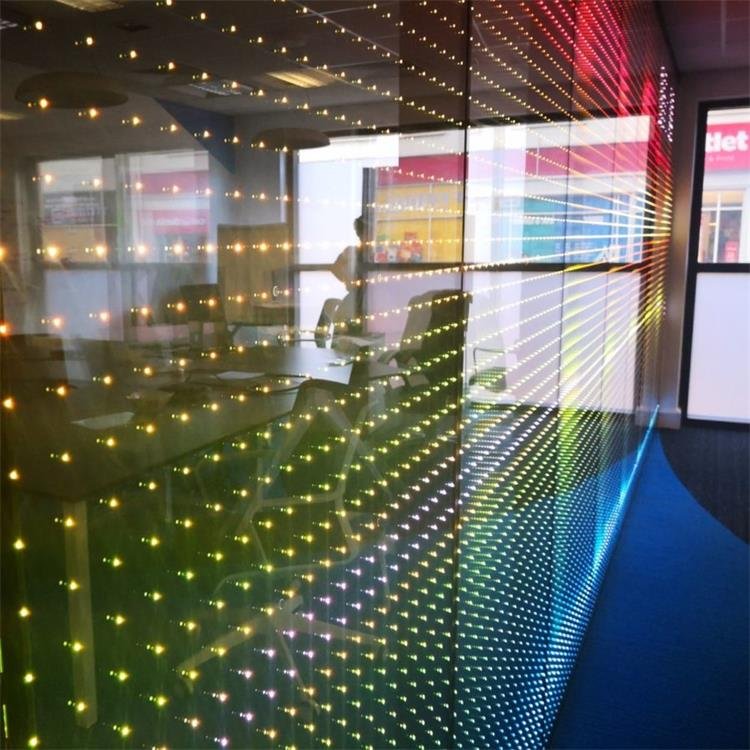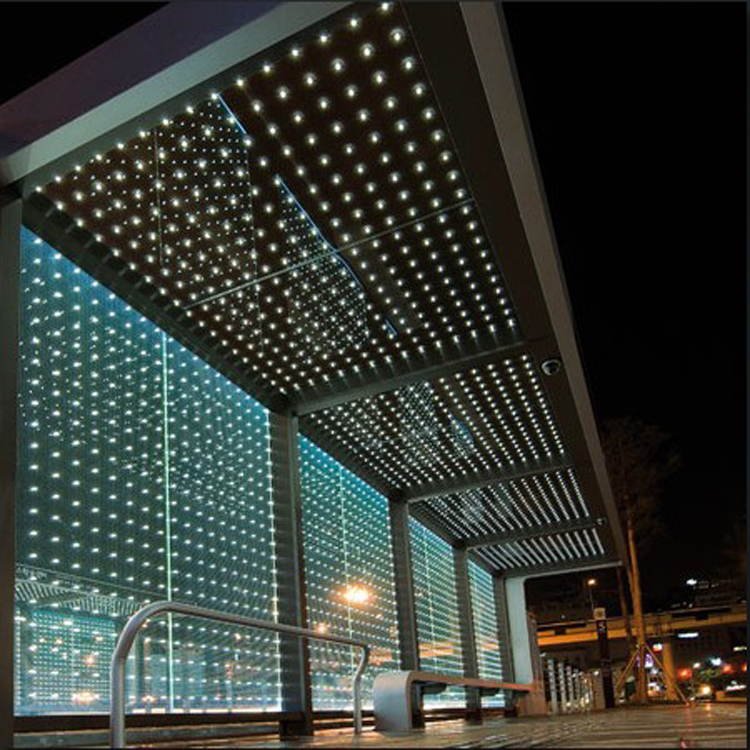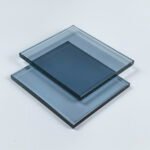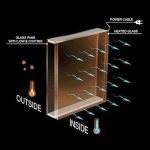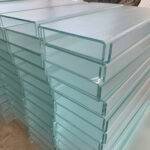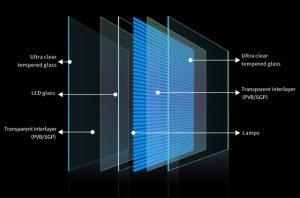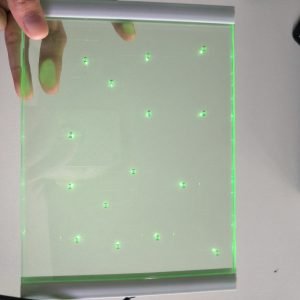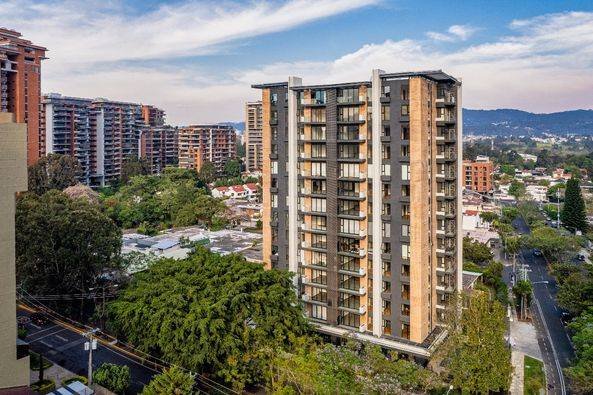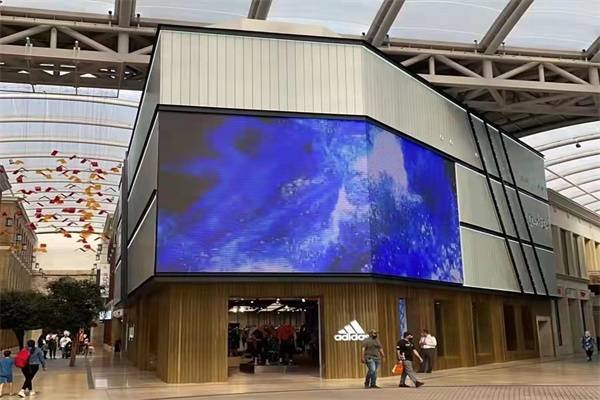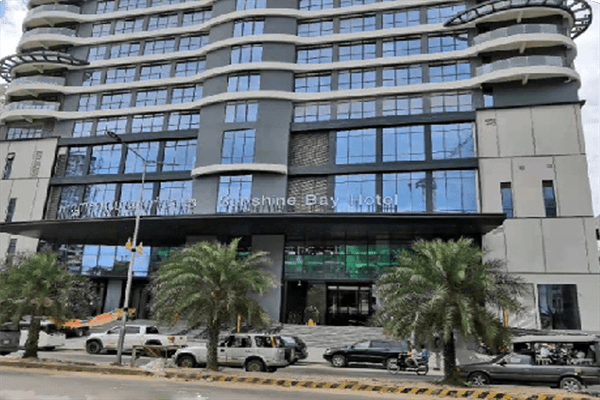What is LED glass?
LED glass is an innovative type of architectural glass that integrates light-emitting diodes (LEDs) within the glass structure. These LEDs are embedded between layers of glass, creating a dynamic, illuminated surface that can be used for both decorative and functional purposes. LED glass offers a unique combination of transparency, lighting, and modern design, allowing architects, interior designers, and businesses to incorporate light into building elements like walls, windows, and facades in creative and impactful ways.
Key Features of LED Glass
- Integrated Lighting:The LEDs are seamlessly embedded within the glass layers, which are usually made from laminated or tempered glass. This allows for controlled, even illumination across the surface without visible wires or light fixtures, making it a clean and sophisticated option.
- Customizable Designs:LED glass can be tailored to display various colors, patterns, and lighting effects. Some systems even allow for programmable lighting, enabling dynamic displays or color changes based on time, events, or user input—perfect for applications requiring interactive LED glass.
- Energy Efficiency:LEDs are known for their low energy consumption and long lifespan. When combined with glass, LED glass offers a sustainable lighting solution with minimal maintenance requirements, similar to the benefits seen in energy-efficient reflective glass.
- Transparency and Opacity Options:Depending on the configuration, LED glass can remain fully transparent when the lights are off or have a more frosted appearance to diffuse the light. It can also be made with switchable features, allowing the glass to transition between transparent and opaque states, akin to the flexibility of smart LED glass.
- Durability:Like other laminated or tempered glass products, LED glass retains the strength and safety characteristics of the glass it’s made from. It’s designed to withstand impact and environmental factors, making it suitable for indoor and outdoor use—similar to the robustness of clear fused tempered glass.
Applications of LED Glass
- Building Facades:LED glass is often used in building exteriors to create striking, illuminated facades that can change colors or display animations. This is especially popular in corporate buildings, hotels, and entertainment venues where a dynamic visual impact is desired.
- Interior Design:In interior spaces, LED glass is used for partitions, walls, staircases, or ceilings to create ambient lighting or dramatic focal points. The integration of light into these architectural elements enhances the overall design and atmosphere, just as gradient glass can.
- Advertising and Retail:Retail spaces and advertisers use LED glass for signage and display windows. The ability to project light and imagery directly onto the glass surface without traditional screens allows for eye-catching, modern displays that attract attention, much like colored hot melt glass.
- Smart Glass Integration:Some LED glass systems incorporate smart technology, allowing users to control the lighting through a smartphone app or connected devices. This makes it a popular choice for smart buildings, where lighting can be adjusted based on time of day, weather, or occupancy.
- Event Spaces and Exhibitions:LED glass is used in temporary installations, exhibitions, and events where interactive lighting can create memorable experiences. The programmable nature of LEDs allows for customized light shows, messaging, or branding elements, adding to the versatility of decorative LED glass.
Benefits of LED Glass
- Energy-Efficient Lighting:With low energy consumption and long life, LED glass provides a sustainable lighting solution, contributing to green architecture.
- Aesthetic Appeal:The ability to combine transparency and lighting gives designers creative freedom to achieve modern, eye-catching designs, similar to the innovations seen in frosted glass applications.
- Customizable and Dynamic:Programmable LEDs offer flexibility for changing colors, brightness, and patterns, providing a unique way to highlight architecture or create interactive environments.
- Versatility:LED glass can be used in both indoor and outdoor settings across a range of industries, from architecture to retail and entertainment, showcasing its adaptability.
- Low Maintenance:The durability and long lifespan of LEDs mean that the glass requires minimal maintenance, even in high-use or outdoor environments, reinforcing its practicality for various applications.
In summary, LED glass combines aesthetic beauty with practical functionality, making it an exceptional choice for diverse applications. Its unique properties and versatility continue to inspire creativity in modern architectural and design projects.
To learn more about our products, please visit https://trustmyglass.com/products

